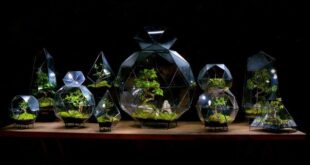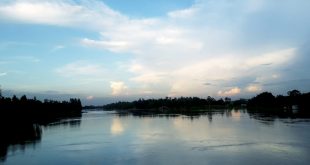Do you ever notice any cacti in a normal field or pond? Or ever seen any Mango, Jackfruit, or other fruiting trees in the seashore? It’s not to happen. And here comes the fact of adaptation of plants in different habitats.
Adaptations are special features that allow a plant or animal to live in a particular place or habitat.
The term adaptation is derived from the Latin word ‘adaptare’ which means ‘to fit’.
Adaptation is the adjustment or changes in behavior, physiology, and structure of an organism to become more suited to an environment. Plants have adaptations to help them live and grow in different areas.
Adaptation explains why certain plants are found in one area but not in another. For example, cacti are not found in the Arctic and tall trees are not seen in grassland.
Types of Adaptation in Plants
There are 3 main types of adaptations found in organisms:
- Structural adaptation
- Physiological adaptation
- Behavioral adaptation
Structural Adaptation
When structures are built or made in organisms to adapt to their environment then it is called structural adaptation.
- Adaptation to get food
– Leaves and stems absorb energy from the Sun.
- Adaptation to get water and nutrients
– Roots soak up water and nutrients from the soil
- Adaptation for reproduction
– Sweet fruit attracts animals that spread seeds far away.
– Some seeds are shaped to catch the wind.
– Brightly colored flower with nectar attracts pollinators such as birds, bees, and insects.
- Adaptation for defense
– Spines and thorns protect plants from predators.
– Poison ivy and Poison oak have toxins that give predators a painful itchy rash.
Physiological Adaptation
When physiological functions are developed or modified in organisms to adapt to the environment then it is called physiological adaptation.
- Photosynthesis in stems when no leaves in plants.
- Flowers open at night when cooler.
- Organisms gain resistance against antibiotics or pesticides.
Behavioral Adaptation
The acts of organisms done naturally or by instinct are known as behavioral adaptation.
- Adaptation to get food
– Plants like the venus fly trap, trap insects for food.
– Plants lean or grow towards the Sun.
– Roots grow down into the soil.
– Vines climb up trees to catch Sunlight.
- Adaptations to get water and nutrients
– Desert flowers can stay dormant for months, only coming to life when it rains.
- Adaptation for reproduction
– Plant drop seeds for new offspring.
Adaptation of Plants on Water Availability
Plants can be classified into the following types based on their adaptation to the availability of water:
- Hydrophytes
- Hygrophytes
- Mesophytes
- Xerophytes
- Halophytes
Hydrophytes
The plants which grow in water partially or completely are known as aquatic plants or hydrophytes. Water may be freshwater or saline water.
Example:
- Hydrilla sp.
- Eichhornia crassipes
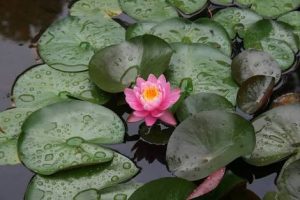 Hydrophytic plant. More.
Hydrophytic plant. More.
Hygrophytes
- The plants of this group are invariably moisture and shade-loving.
- Their root system and vascular tissue are poorly developed.
- Their stem and roots are soft and spongy and show stunted growth.
- The stem is mostly modified as an underground rhizome which is also an organ for propagation.
- The leaves are well developed and prominent, provided with stomata.
- Since these plants grow in moist and shady habitats, their rate of transpiration is very low, and the excess water is expelled through special openings called water stomata or hydathodes.
Common examples are ferns, begonias, aroids, and certain grasses.
Mesophytes
Mesophytes are plants that can grow and thrive under typically average conditions. They require an average amount of water and a consistent average temperature to survive.
Most of the plants surrounding us are mesophytes.
Xerophytes
The plants which grow in the xeric (dry) environment (habitat) are called xerophytes. Deserts are the best example of a xeric environment, where plants face inadequate water and high transpiration rate.
Xerophytes are classified into the following three categories-
- Ephemerals: These plants complete their life cycle within a short period. They are also called “drought escapers” or “drought evaders”.
- Succulents: These plants have succulent and fleshy organs to store a high amount of water accumulated during the rainy season.
- True xerophytes: Plants that can live under extremely dry conditions and high temperatures.
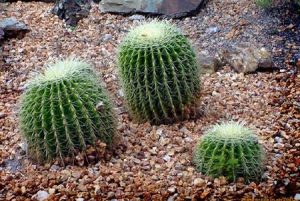 Xerophytic plant. more..
Xerophytic plant. more..
Halophytes
Plants that survive in saline conditions are known as halophytes.
Since halophytes can not easily absorb water, they develop almost all important xerophytic devices for optimum use of water.
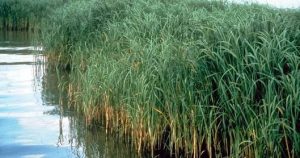
 Plantlet The Blogging Platform of Department of Botany, University of Dhaka
Plantlet The Blogging Platform of Department of Botany, University of Dhaka


